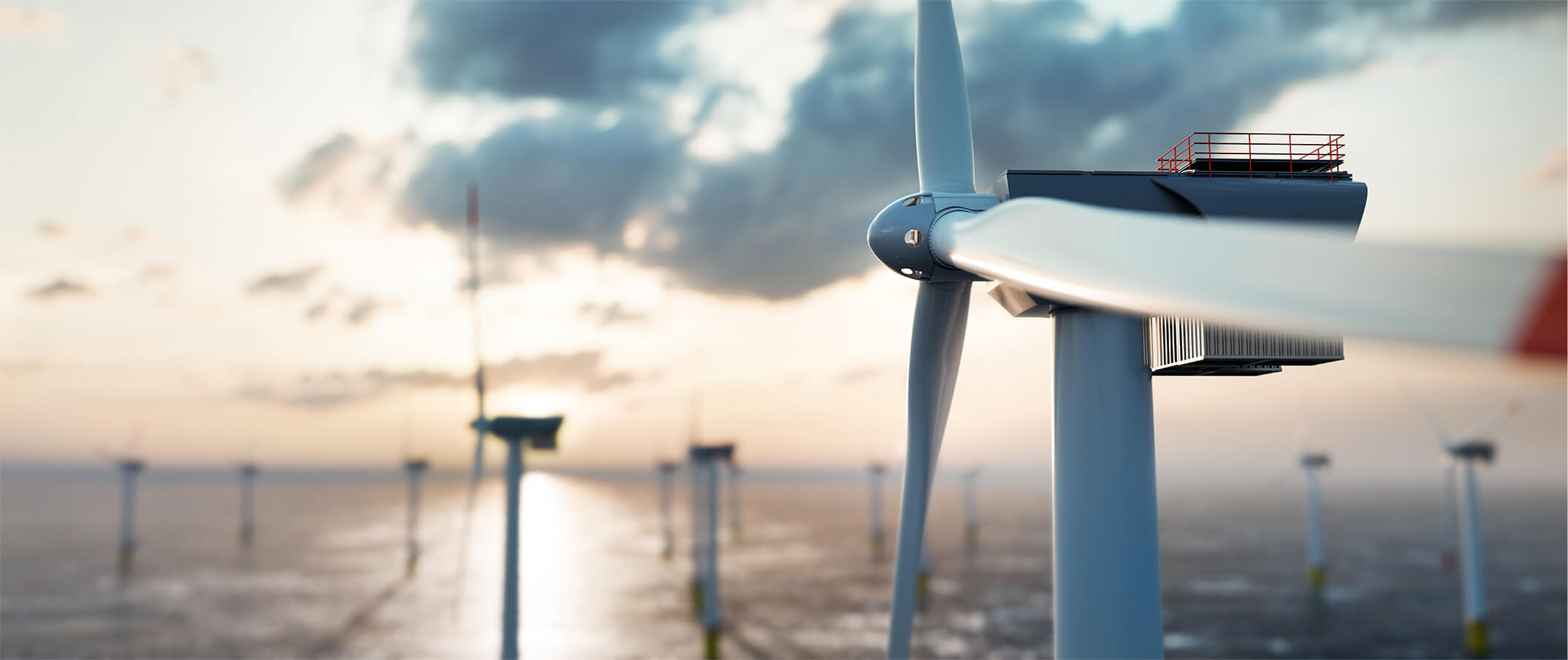This is the first in a series of posts titled “A Gentle Introduction to Wind Power for Software Developers” meant to introduce the wind domain for software developers, who are about to work in the field. Large tomes have been written about wind energy – in this series we will try to give a broad overview of what you might want to know about the wind field when starting out.
A brief moment in history
Humans have used wind for thousands of years. First in sailboats and then later to grind grain and pump water. In 1887 the first wind turbine used to create electricity was built in Scotland. For some time, wind turbines were only used sporadically, competing against fossil fuel plants and centralized electricity production. This changed after the 1973 oil crisis, when a doubling of oil prices made development of alternative energy sources a national priority for countries such as the United States, the UK, Germany, and Sweden.
In the following decades, a mix of small (<100KW) turbines and larger turbines that could provide multiple megawatts of power, were constructed side by side. Wind energy and turbine sizes have continued to grow because of concerns about energy security, oil prices, and global warming.
Wind energy becomes cheaper
Technical advancements have also allowed wind energy to continually become cheaper. While wind power has traditionally been heavily subsidized to allow it to compete against fossil fuels, the price of wind is trending down, and in the last five years onshore wind has almost become price-competitive, while offshore wind still having a bit of way to go[i].
The growth of the wind industry also changed the game. Small, lonely wind turbines have given way to large parks, both on land but also in the ocean. These offshore parks can take advantage of the better wind conditions at sea, and there are fewer noise complaints.
At scales like this, having the right data matters, both when figuring out where to place offshore wind parks, but also when operating them.
Offshore wind parks are expensive, so it is important that they’re done right. You need the wind data when determining where to place the parks, and optimizing the layout of wind parks, can also lead to significant increase in power output.[ii]
Utilizing wind turbine data
Even after the park is built, data is valuable. Turbines generate gigabytes of sensor data every day. Some of this data needs to be collected to be compliant with laws and rules governing the energy grid, but smart wind park operators can use the data for much more than that:
- Nordex has demonstrated using sensor data and heating elements, to increase energy production of up to 15% in cold climates[iii]
- Using IoT, researchers have demonstrated the ability to automatically detect whether turbines are running under normal conditions in more than 90% of cases - significantly lessening the burden on the operators.[iv]
- Using vibrational analysis amongst others, it is possible to predict potential part failures upwards of six months in advance[v], allowing operators to perform predictive maintenance in batches, significantly lessening maintenance costs.
- Using SCADA (Supervisory Control and Data Acquisition) systems and environment measurements make it much easier to safely extend the lifetime of turbines[vi]
Modern turbines can be also be remote-controlled. This is not only important in making operating turbines more efficient but is also crucial in enabling energy providers to react on changes in demand of energy, ensuring that the grid is not overloaded.
As the wind industry becomes increasingly dependent on streams of information going in and out of turbines. This means that the wind industry requires a lot of software. When writing software within a domain, you often have a leg up if you know the domain well. That is why we are writing this – to get you the information about wind turbines you need to be a productive software developer in the wind field.
Written by Gustav Wengel, Software Engineer at SCADA MINDS.
Read more on Gustav's code adventures here.
[ii] https://link.springer.com
[iii] https://www.infopulse.com
https://www.windpowerengineering.com
https://www.nordex-online.com

